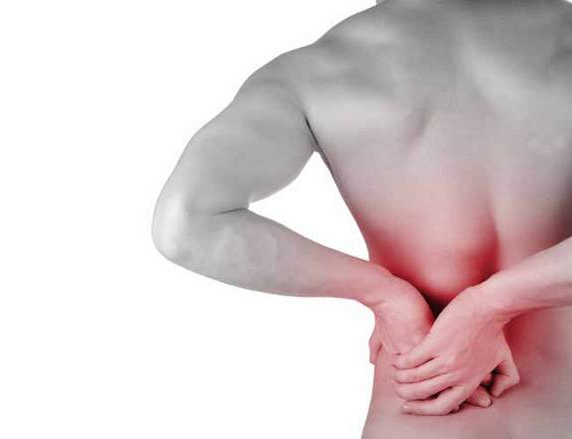Even before pregnancy there can be concerns around whether or not bodywork is appropriate if you are trying to conceive and plan for a baby. There are many questions and myths out there and pregnancy is one of those topics that EVERYONE has an opinion on. So here we will look at some of the science around pregnancy and bodywork to try and clarify concerns surrounding pregnancy and massage.
““Human movement is an amazing orchestra of muscle contractions controlled by the central nervous system to create joint actions to accomplish specific tasks”
There is so much emphasis and strength and weakness and its often the parable that most people go to when they experience an issue that can’t be explained by a strain or sprain. But strength and weakness are not the only parts of the equation we need to consider. Mobility and Stability are equally as important when it comes to the cohesion of working parts moving as one and in synchronicity to create beautiful and eloquent movement patterns
The danger of dogmatic belief is that we tend to close the door to other possibilities. The defence of our opinion sometimes becomes the sole focus of our need to ‘win the argument’ and we become rooted in our belief which leads to a resistance to change.
It would appear that this idea of inflammation being sensitive to weather changes has been around since the ancient Greeks with Hippocrates being noted as the first to cite a link between aches and pains with weather patterns. The short answer is that science is yet to provide adequate evidence based theory as to why or if this link is in fact true. That being said, there is anecdotal evidence to suggest a link between changes in barometric pressure, swelling and sensitivity in sites of old injury.
An often undiagnosed contributor to lower back pain can come in a condition that affects 10% of the population is Bertolotti’s Syndrome. This condition involves stenosis or fusing of the transverse process of the 5th lumbar vertebral segment to the sacrum and whilst many people don’t know they have it, it can be an undiagnosed cause of lower back pain.
The Extensors are a group of muscles that make up the bulk of the posterior forearm. They are separated into two distinct groups of superficial and deep muscles. We have talked before about the bulky Brachioradialis which is the primary elbow flexor and often mistaken as the lesser elbow flexor over Biceps Brachii. In this article we will look at the smaller muscles that can often be attributed to the dreaded Tennis Elbow.
Getting low and go, go, go is a movement pattern that requires great brain cognition and co-ordination and is a skill of being able to transfer power generated from the hips and legs into the upper body and into a movement. It’s fundamental. And it should be part of our daily routine.
The wrist is a very important joint that we may not realise we rely on until we damage it. It’s also a highly complex one as it involves multiple bones and extensions and is also complicated by the fact that many of the muscles that act on the wrist originate much further up the arm at the elbow or along the forearm itself. The other important aspect of wrists strains is that as we age, the wrist is one of the top 3 fracture sites in the ageing person. Often we don’t do enough on our wrists as we age and this makes us susceptible to injury in this area.
The Deep Lines of fascia in the body make up an intricate and foundational platform for much of our movement that occurs through our legs and torso. The deft co-ordination of all different connective tissues and timed sequencing of muscles firing in synchronicity is all dependent on this system to hold ourselves and enable an efficient utilisation of power and torque to enable complex movements.
We’ve talked about the superficial lines in our previous blog and in this article we will move onto the lines that affect rotational movement. These are still superficial lines and they provide support for movement and basic postural adaptions, but perhaps their more primary function is to enable the all important rotational aspect of movement which is so important to us as a biped. We twist and work contralaterally (opposing side) with so many of our basic movements that these lines are vital to ensuring we move well.
Fascial lines help support our movement. They create and necessitate the tension and supportive framework against which our muscles act to create and enable complex movement. There are several lines of interest and influence but in this 1st part of a 3 part series, we will focus on the Superficial Lines.
Theres a certain depth to positive psychology that needs to come from dedicated and deep seated security and this kind of resilience doesn’t come from being superficially optimistic when crisis strikes. Theres a difference to being realistic and resolute as opposed to ignoring emotions, plastering on a smile and covering up with buoyant and effusive happiness. But perhaps it is about finding a balance between these two reactions that we need to address in order to achieve a more positive outlook.
By building tone and strength in the opposing muscle at its greatest range of motion, you are helping to ensure the balance between agonist/antagonist is greater so that in a movement where force is being generated on an already extended muscle, the resulting counter contraction won’t cause such an injury. In this way, by working on a stretch with reciprocal inhibition, we can create a healthy lengthening of muscle where the power of the opposing muscle group doesn’t create an imbalance.
Moving in the transverse plane involves a whole network of stabilising factors that you just don’t get in frontal (side to side) or sagittal (front and back) planes of motion. Rotational movements have implications on what muscle is active in stabilising as you rotate against an axis bringing together a network of muscular and soft tissue contractions and counter contractions to enable rotational movement.
There is a profound change in relationships of strangers happening in our society and local communities in response to the COVID 19 crisis. Outpourings of empathy, generosity, support and charity are happening in our cities, towns, villages, the villages within our cities and in our neighbourhoods. It is ‘a grassroots redefinition of what community means in the 21st Century”’
Those of us who have been at the top end of our performances and heralded the accolades of former glories will well know this space of resigned acceptance that in all things - age matters. Yes, deny as much as we all might like to, the mere fact is that there comes a point in our sporting and movement prowess where we must accept that the jump begins to lessen, the reach becomes more difficult and the bounce begins to go from our bungy!
There’s a lot to be said for bringing some water into your reality. Pebble bubble fountains are a thing because there is science behind it! Water serves as a calming element and having water around us has a direct impact on our mental health and cognition. We’ve kind of known this for centuries. So it stand to reason now that we explore the science behind this and actively promote this ideal for the betterment of all cities and the global population at large.
We’ve all been 'stressed out’ and had a stressful day at work, and these adjectives get bantered around the kitchen table at the end of the day. But stress can pass - usually with a good glass of wine or food or a great hug. The stressor leaves and we are left feeling a little easier or better. Anxiety is the next level of that commonplace phrase and takes on slightly more serious issues. Anxiety has more far reaching implications that are perhaps more invasive and more far reaching than simple stress.
Cortisone injections have long been prescribed as a way of treating joint pain and issues that are perhaps stubborn to treatment. Protocols of therapy have often included some short periods of manual therapy and then ‘if that doesn’t work we will give you a cortisone injection’. However, research points to a risk that these injections may not be as complication free as originally thought and may actually be a pre-indicator for early onset arthritis and possible joint complications that require more invasive surgery later.
The Vagus Nerve (#10) is the longest and most complex of the 12 Cranial Nerves and scientists have been utilising its effects since the late 1990’s to treat conditions such as epilepsy and depression. More recent investigation into how effective it can be to downgrade conditions such as cluster headaches, Parkinsons symptoms, bowel disease, arthritis and mood disorders have been a popular area of research and understanding as medical professionals try to assist human suffering.



